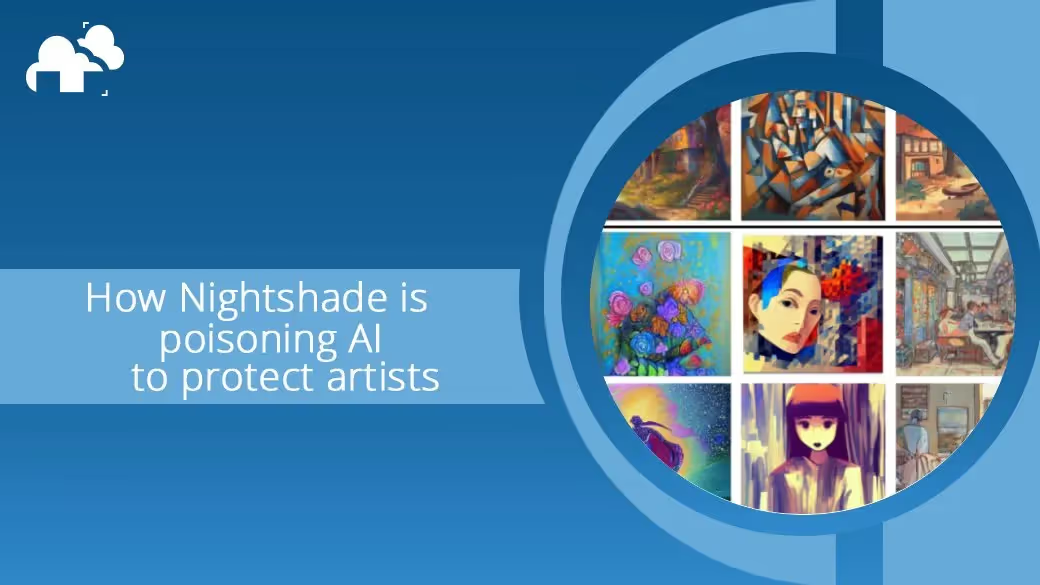
Art tools driven by artificial intelligence have taken the art community by storm, generating incredible believable, and seemingly original art pieces using advanced algorithms. However, the progress of AI has generated concern from artists worried about how their work could be used for AI without their knowledge, potentially stealing their creative energies, artistic style, and intellectual property.
The close-sourced nature of platforms like Midjorney makes it difficult to prove such claims, although some platforms, like OpenAI’s DALL-E, openly admit to crawling the internet for images and artwork to use as training data. The ethics of such practices are deeply contested, leading many artists to look for ways to prevent generative AI from viewing their work.
This is where Nightshade steps in. Nightshade is the result of recent work by researchers at the University of Chicago to develop a tool that protects artists’ work by tricking AI tools into misidentifying the elements of an image.
Fed up with render times holding you back from finishing 3D projects? Take your workflow to the next level with our render farm - claim $25 in free credits now to instantly access thousands of CPU and GPU cores in the cloud, helping you power through jobs in hours instead of days. Our simple plugin integrations and friendly 24/7 support mean getting started is effortless, so don't wait - try on-demand cloud rendering risk-free today and see how much faster your scenes can render!
Nightshade works by changing the pixels of an image in subtle ways to match the features of images. While imperceivable to the human eye, the small changes trick AI into believing an image’s subject is something other than what it really is. For example, researchers took an image of a dog and subtly changed the image to match the visual features of a cat (using an “anchor” image of a cat), thereby poisoning the image. Any AI using the image as training data will now see the dog as a cat, distorting any resulting AI-generated images.
.avif)
A key aspect of Nightshade is the potency by which it poisons AI datasets. Nightshade isn’t the first tool seeking to mess with AI, but it is trying to be the most effective. With just 50 to 200 poisoned images, the tool can visibly distort a trained AI.
.avif)
In their paper, the researchers behind Nightshade highlight how tools like theirs can be used by artists and other intellectual property owners to protect their work. Nightshade can also simultaneously protect the intellectual property of artists, while not destroying the effectiveness of a poisoned AI. For example, an artist can protect their specific style, while still providing an AI something relevant to process so as not to totally destroy the training data of an AI. For example, by using the features of a royalty-free image of a dog, to protect their artwork of a dog.
Nightshade taps into an ongoing debate among artists and tech communities about the ethics of today’s AI tools. Concern among artists has grown regarding how AI models are being trained, and what data are being trained on. On the one hand, artists view the use of their work by AI without permission as theft and a violation of copyright law. On the other hand, those behind generative AI claim that their tools are merely inspired by the images they are trained on, rather than directly using the images.
So far, artists have had few tools to protect their work from unauthorized use by AI. Some artists have even gone so far as to no longer publish their work on online platforms, in fear that their artistic style and intellectual property will be stolen. Nightshade, and tools like it, could be a way for artists to establish a say in how AI models are trained.
As the ethical debate surrounding AI has continued, some generative AI providers have already responded with better tools for creators to control how their work is used. For example, #NoAI tags on platforms are becoming more common for artists to indicate that they do not consent to the use of their images for AI purposes. Additionally, AI tools like Adobe Firefly are now being trained using only licensed images, rather than with web-scraped images and other questionable image sources.
While we have yet to see the effects that Nightshade will have on the creative community, it does give hope to artists that their work can be protected from use by AI. Nightshade has the potential to be malicious, but vitally, it will realistically only be harmful to AIs using images without the permission of artists, effectively forcing the hand of generative AI providers to commit to ethical practices on the terms of artists.
To learn more about Nightshade, you can check out the full paper about the tool here.